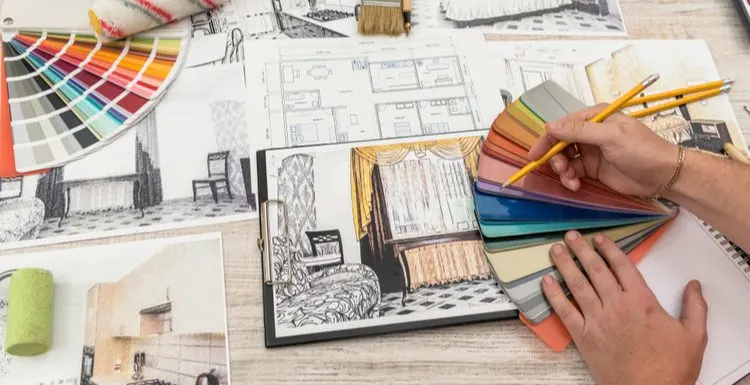There are countless options when it comes to different interior design styles for your home. We’ve put together a list of eight popular interior design styles we think you’ll love. Read on to see why we love each other.
There’s a different interior design style for every taste. From the decadent layering of textiles to the celebration of function over form, we’ve got you covered. Our list compares just a few of the most prominent design styles, so you can decide what’s best for you.
8 Different Interior Design Styles
Let’s consider how to describe different interior design styles and what elements make up each.
We’ll compare some styles to each other and go over simple ways you can incorporate a particular style into the spaces of your home.
1. Contemporary
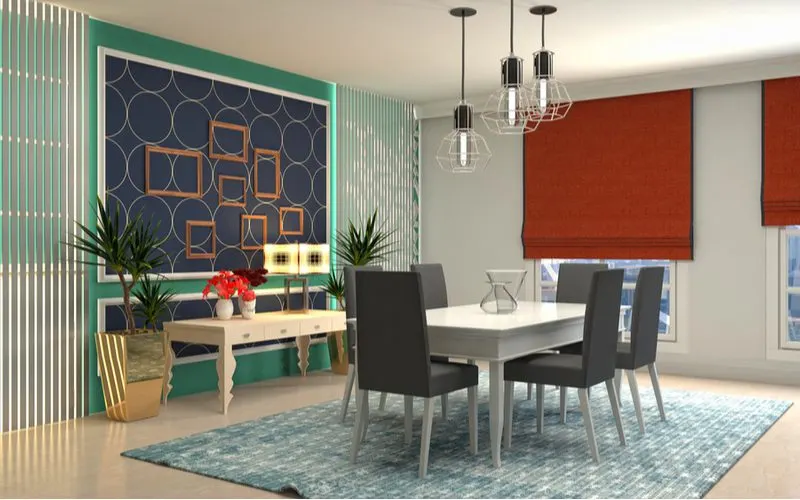
Interior Design/Shutterstock
We put contemporary first on our list because of its timeless quality. You may find it hard to describe because it’s forever changing! Contemporary takes current trends in interior design and combines them in sleek, open spaces.
With this style, you’ll see lots of clean lines, classic details, and texture. People often confuse contemporary with different interior design styles, like modern or minimalist.
Contemporary can have elements in common with these styles, like a neutral color palette and simple shapes. The difference is that while other styles take from groundbreaking trends of the last few decades, contemporary will always take from trends of the moment.
You’ll have more wiggle room with contemporary interior design than with other styles. Because contemporary can be more eclectic.
Drape an oversized knit blanket on a sharp-lined platform bed. Position a trendy wicker pendant lamp over a modern glass dining room table. Use classic elements like traditional moldings or bright pops of color to soften a space.
2. Traditional
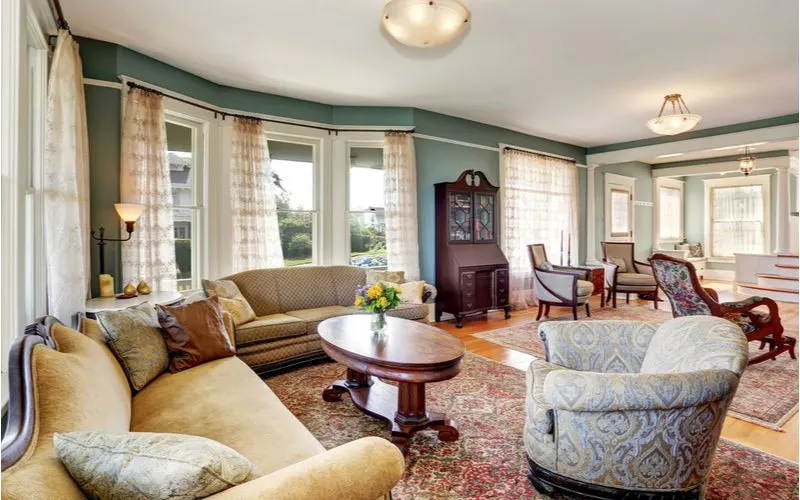
Artazum/Shutterstock
For traditional interior design, think of cohesive color schemes and prints. Think plaids, florals, dark wood, and ornate details on furniture and window treatments.
Traditional is where to look for well-known pieces like Persian rugs, gold-filigree mirrors, Louis VI chairs, and tasseled curtains, among different interior design styles. Don’t take the formality of traditional style as cold or stuffy.
It can make a room warm and inviting with a muted, calming color palette and symmetrically placed furniture. The appeal of this take on interior design is that elements have changed little, if at all, over the years and decades.
The comfort of the familiar combined with elegant beauty is what tradition offers. New traditional and transitional styles allow you to make traditional more your own.
For transitional, combine 19th-century furniture and a Persian rug with contemporary pieces and an oversized abstract work of art.
For New Traditional, blend a white or black color scheme and sleek furniture pieces with traditional-style artwork, light fixtures, and prints.
3. Modern
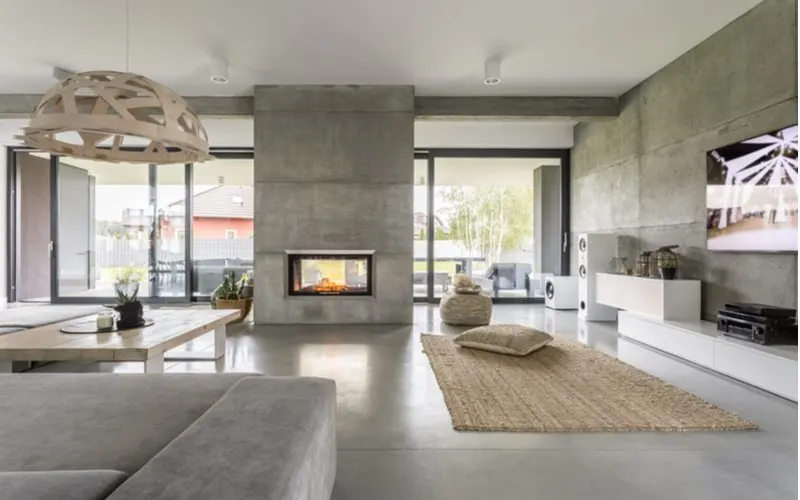
Photographee.eu/Shutterstock
Modern style gets its name from cutting-edge design, which was popularized during the Modernism movement of the early 20th century. Here, you’ll find stark lines and monochromatic color schemes in neutral tones.
Unlike minimalism, you find pops of color in modern interior design. This style is all about square furniture, sleek light fixtures, and less decorative pieces.
In classic modern style, you’ll come across a lot of metal, glass, and processed wood. This is still all about clean shapes and the bold juxtaposition of deep, earthy colors.
Think about other parts of modernism: striking art by the likes of Picasso, Piet Mondrian, and Paul Klee.
Modern interior design rejects the traditional frills of traditional interior design that came before it. Different interior design styles have been born from modern style. The biggest change with each substyle is the materials:
Dessert Modern
The cornerstone of this style is warm oranges and tan elements in simple designs brought together with materials like plaster, terra cotta, bleached wood, and stone.
Lux Modern
Modern interior design gets a monetary makeover here with shiny metallic finishes, upholsteries in soft furs, supple leather, and velvets. Furniture is wide with simple lines.
Urban Modern
City living makes sense in modern style. Bring them together with modern style’s neutral palette and sleek lines, industrial-style fixtures, leather, and concrete.
Whatever your take on modern interior design, ditch the knick-knacks. Focus on big art installations and bursts of color that go with your interpretation of sleek modern style.
4. Minimalist
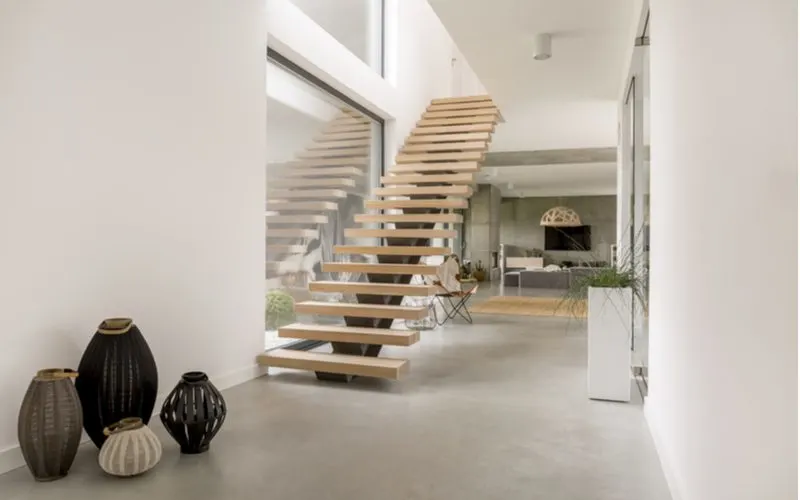
Photographee.eu/Shutterstock
Whereas modern interior design is about sleek lines and minimal décor, minimalism is about the value of empty space.
They seem similar, but minimalism takes simplicity a step further. Keep a room looking light and airy with neutral tones and no patterns or prints.
Color palettes should be strictly one or two tones. This is a massive element of minimalist design.
In minimalist style, function is key, and beauty is simple. When considering different interior design styles, minimalism is a perfect choice for kitchens. Soft light reflects off sleek, empty countertops.
The lines of cabinets are admired for their storage as much as for their design. While purists love the starkness of true minimalism, it has become popular to introduce an extra element from other styles. Finish a minimalist dining room with an oversized Persian rug.
Add color by introducing a single large piece of abstract art. The simplicity of the style allows for some mixing, but keep it minimal as a way to stay true to the heart of minimalism.
5. Mid-Century Modern
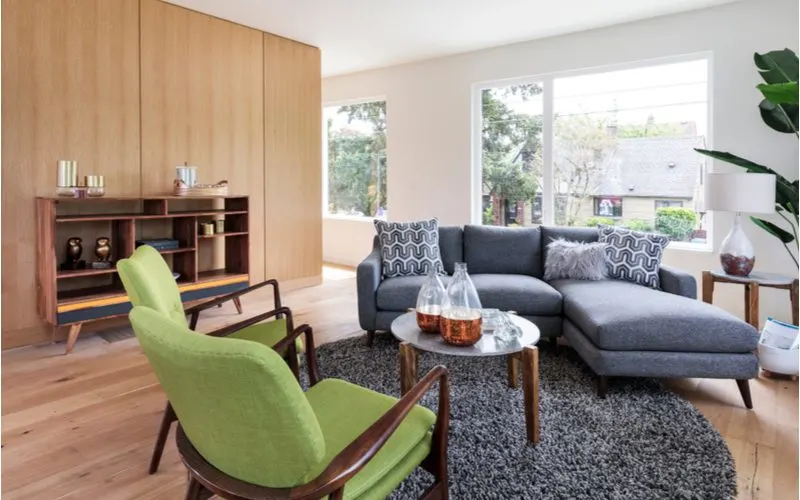
David Papazian/Shutterstock
There’s just something about Mid-Century Modern, or MCM, that has become timeless. It’s incredibly popular, combining warmth, organic shapes, and simple lines in a way that works in all kinds of spaces.
Lovers of vintage furniture and the retro designs of the 1950s and 1960s will love MCM. Look for hairpin furniture legs, warm wood finishes, shell chairs, and simple coffee tables with flat stone or Formica tops.
Look for saturated colors of the era like burnt orange, forest green, mustard yellow, and royal blue.
Sofas will be overstuffed but streamlined. To add an element of MCM to your home, look for sunburst mirrors, postmodern vases, or a floating egg chair.
The style can be found everywhere, from flea markets and antique shops to current home furnishing manufacturers and box stores.
6. Bohemian
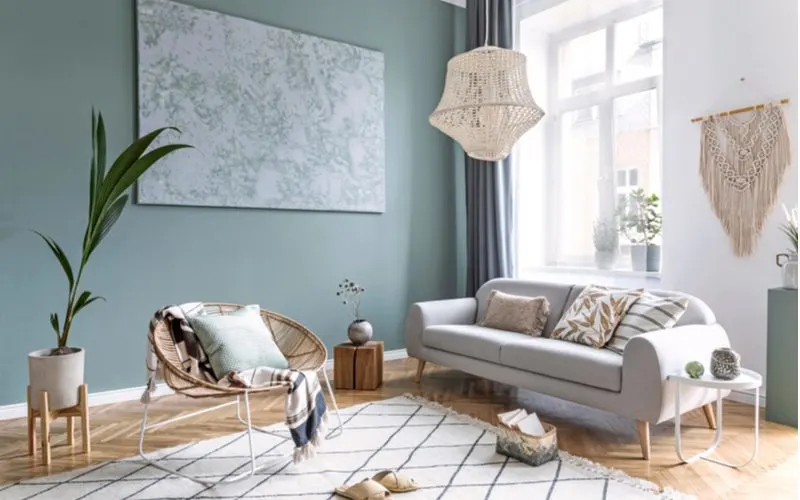
Followtheflow/Shutterstock
Bohemian interior design stirs up images of nomadic tent dwellers, scavengers, and gatherers of beautifully worn treasures.
When looking at different interior design styles, bohemian could be considered the antithesis of minimalism.
Imagine decadent layers and collections of worn and used pieces alongside mismatched furniture of varying styles and colors.
Some of the key elements you’ll see in bohemian interior design are:
- Rattan
- Grass
- woven textiles
- copper and brass with heavy patina
- chandeliers dripping with crystal pendants
- raw crystal points
- drippy candles, wooden candlesticks, and tea lights
- layering of prints and patterns
- Planters
- Layers of worn Turkish rugs
- knobby wooden furniture
- Moroccan throws
- Boho curtains
Colors are rich and warm, like jeweled tones. Often, light woods, unbleached fabrics, and macramé weavings are used to add a calmer, more natural feel to the style. Eastern elements like Japanese block prints and Indian garland are included for an exotic feel.
Look for low furniture and lots of pillows and throws in deep colors and soft fabrics.
To keep the look current and clean, keep walls and floors a neutral color. Look for authentically weathered items at flea markets.
Some think that you can go overboard with the layers, but we disagree. Bohemian style is all about the half-hazard gathering of beautiful things.
7. Eclectic
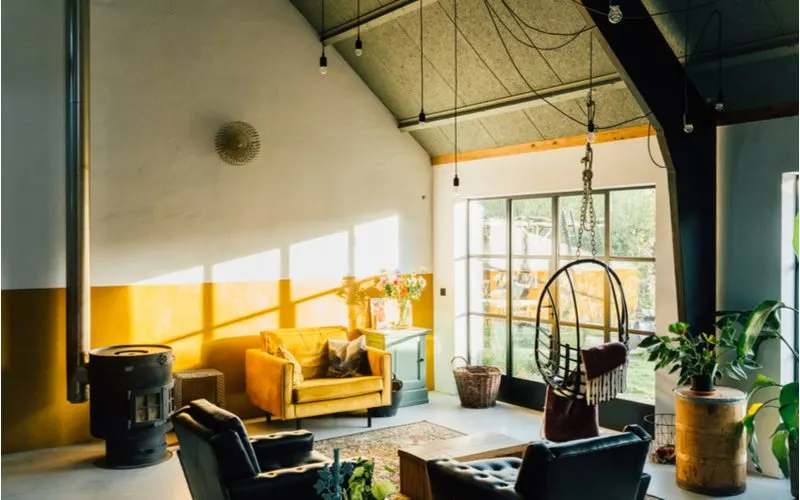
Hugo Goudswaard/Shutterstock
This style could be considered the more mature version of bohemian interior design. While it can be challenging to describe, it could be simply put that the eclectic interior design style is planned collections and layers of different design styles.
There is discipline about it, but in the end, it’s still about gathering your favorite things around you.
Artistic types tend to go for this style because there is a challenge of balancing pieces off each other. You might find a traditional overstuffed velvet sofa next to a metal MCM pendant lamp with a modern marble coffee table on top of a vintage Turkish rug.
The key to the eclectic look is picking vital elements from different interior design styles and consistently placing them around the room to create a cohesive look.
Sharp lines in dark metals play off luxurious furniture, while you might find multiple decorative pieces all in a similar hue. It’s really all about gathering things that you love from different styles to complement each other.
8. Industrial
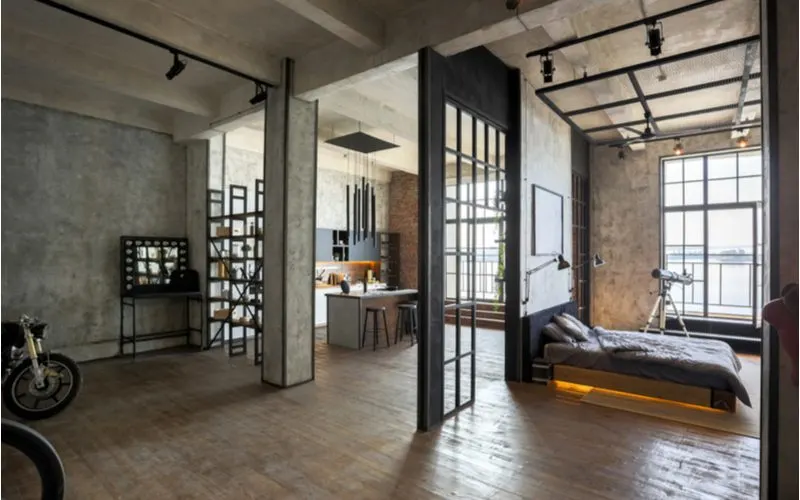
PinkyWinky/Shutterstock
This interior design style has roots in the post-industrial era, when factories and warehouses were suddenly empty and being bought up for housing. You would find empty, raw spaces with exposed pipes, beams, and brick.
Industrial style leans on found items, large statement pieces, and a neutral color palette. Go for industrial if your home has an open floor plan, high ceilings and windows, and wood or concrete floors. These elements go cohesively with the industrial look.
Comparing different interior design styles, industrial style evokes a more masculine feeling than most others.
This is put in check by supple leather, large house plants, and art pieces meant to bring in softness. If you like the industrial style, go with a honey-colored leather sofa on wooden floors.
Choose stainless steel counters in a kitchen with exposed brick. Highlight exposed ductwork instead of covering it up.
Worn wood furniture and unfinished metal accents immediately evoke the style in any room. Keep in mind that industrial style can make small spaces feel even smaller.
Frequently Asked Questions
Let’s go over some of the most frequently asked questions concerning different interior design types.
What are the 7 elements of interior design?
The 7 elements, or principles, of interior design, are used by designers to understand and design an aesthetically pleasing space. They are: space, lines, form, light, color, texture, pattern.
These are tried and true principles that anyone can use when thinking about decorating a room in your home.
Can you mix interior design styles in one room?
Yes, but be careful to keep the look cohesive. Designers encourage using the 80/20 rule, which is the idea that 80 percent of the look is one style while the remaining 20 percent is the other.
Is it okay to have different styles in different rooms?
This is fine because each room is its own space. If you prefer a flow to your home, keep styles similar from room to room. A contemporary kitchen could work with a traditional dining room.
How do I choose an interior design style?
Create an inspiration board on paper or in an app. Any space that allows you to look at pieces that excite you will give you a clue. Look in your closet or consider your favorite movie. Think about what elements you love to look at.
Do I have to follow interior design rules?
Interior design is an art. There are no rules that you must follow, but instead, there are ideas that experienced designers have found to be key in creating a beautiful space. No one can tell you what you will find beautiful about the spaces you design.
What’s Your Favorite Interior Design Style?
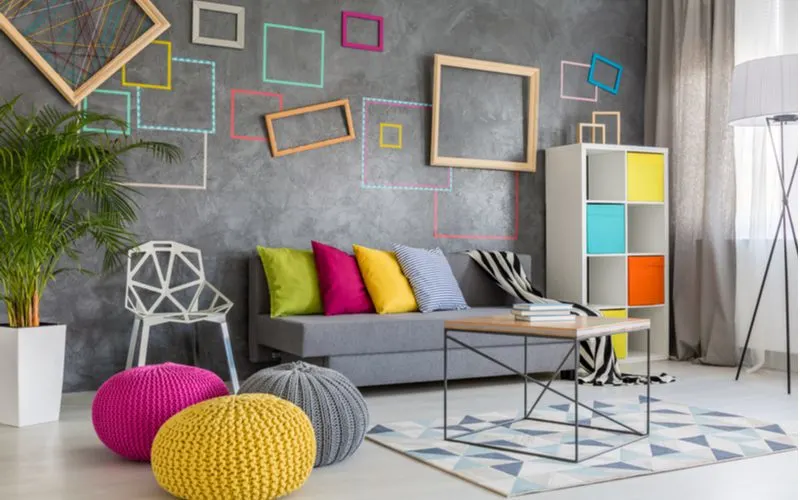
Photographee.eu/Shutterstock
Designing a beautiful, inviting space is personal. Your interior design style is about what you love.
We’ve described just a few of the most popular interior design styles. We hope that you find one that speaks to you!

